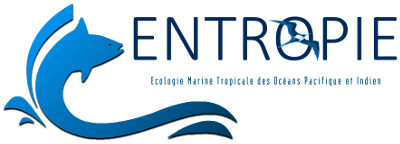Seabird community structure in a coastal tropical environment: importance of natural factors and fish aggregating devices (FADs)
Résumé
In tropical waters, productivity is low and seabirds only feed at the surface, often in association with sub-surface predators. We studied the distribution and abundance of seabirds in the coastal marine environment around Réunion Island, SW Indian Ocean, between February 2001 and October 2002. We investigated the distribution and abundance of birds at sea with respect to the effects of natural factors, such as bathymetry, distance to the shore, season and associations with subsurface predatory schools, and the presence of anchored fish aggregating devices (FADs). A total of 13572 birds of 15 species were observed, 8 of which were rare. Among the 7 abundant species, lesser noddies appeared to favour the shelf area. Barau's petrels and sooty terns were more abundant offshore, and wedge-tailed shearwaters, Audubon's shearwaters, white-tailed tropicbirds and brown noddies were present over all habitats. When foraging, most species searched for prey solitarily or in very small groups. When feeding, they were generally in large multi-species flocks, especially when feeding events occurred in association with sub-surface predatory schools. Associations with surfacefeeding schools of tunas, mainly skipjack, increased the abundance of most seabird species that fed on small fish or squids. The notable exception was for the white-tailed tropicbird, which was rarely found in association with sub-surface predators and, when associated, preferentially selected dolphin pods rather than tuna schools. Although they were often associated with tuna schools, lesser noddies were also strongly concentrated on the shelf, feeding on small pelagic schools. While the aggregating power of FADs on pelagic fish has previously been demonstrated, the associations between schools of sub-surface predators and seabirds were not more frequent close to FADs. However, 2 seabird species were more abundant close to FADs when feeding, and 1 when foraging, suggesting that they may occasionally take advantage of the attractive power of FADs. Seasonal variations in the occurrence of associations indicated a turn-over of fish species that induced variations in the nature of the associations, with the greatest aggregating power of dolphin fish in spring during their peak of abundance in the vicinity of the island
Origine : Fichiers éditeurs autorisés sur une archive ouverte
Loading...



